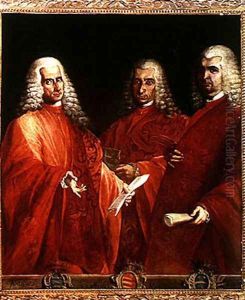Vicenzo Guarana Paintings
Vicenzo Guarana was an Italian painter, born in 1720 in the city of Verona, part of the Republic of Venice during his lifetime. He is considered part of the late Baroque or Rococo movement, which was characterized by elaborate ornamentation, asymmetrical values, pastel color palette, and often playful themes. Notably, Guarana was a student of the prominent Venetian painter Giovanni Battista Tiepolo, under whose tutelage he honed his skills and developed his style.
Guarana's works are distinguished by their vibrant colors and dynamic compositions. He worked on both frescoes and canvas, and his art is often noted for its theatricality and the use of light, a technique likely influenced by his master Tiepolo. Although Guarana is not as well-known as some of his contemporaries, he contributed significantly to the art of his region, receiving commissions for decorative works in various palaces and churches.
Throughout his career, Guarana remained active in Verona, where he worked on numerous religious and secular commissions. His frescoes can be found in prominent locations such as the churches of San Tomaso Cantuariense and San Bernardino in Verona. He also ventured into mythological and historical subjects, which were popular among the aristocracy of the time. Guarana's work was part of a larger cultural movement in Verona and Venice where grandeur and embellishment were favored in both private and public spaces.
Vicenzo Guarana died in 1803, leaving behind a legacy that would influence the decorative arts in the Veneto region. His works continue to be studied by art historians and are appreciated by enthusiasts of the Rococo style. Although he did not achieve the same level of fame as his mentor Tiepolo, Guarana's contributions to the Italian art scene of the 18th century remain significant, exemplifying the exuberance and elegance of the period.
